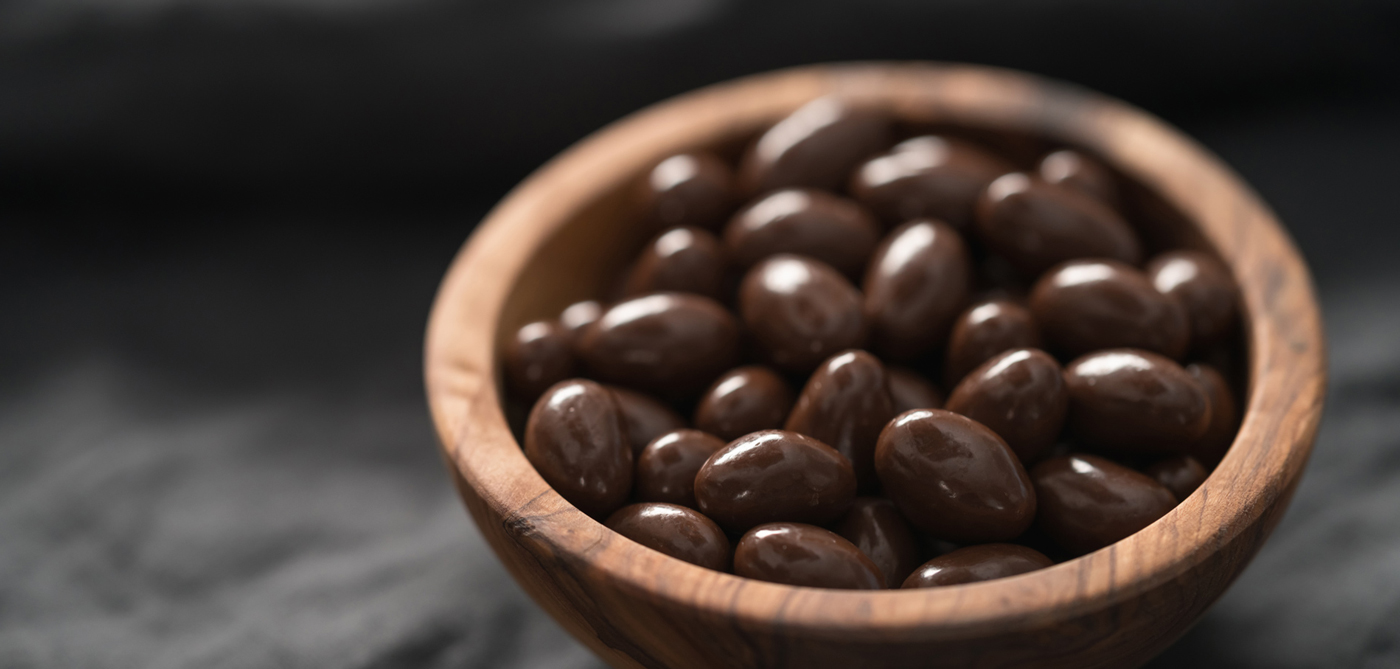

APPLICATION
Protecting chocolate panned goods with a glaze
A chocolate-coated candy has a dull surface right after the chocolate-coating phase. Panned chocolate goods must show a glossy surface. A specific glaze is chosen and applied under controlled conditions.
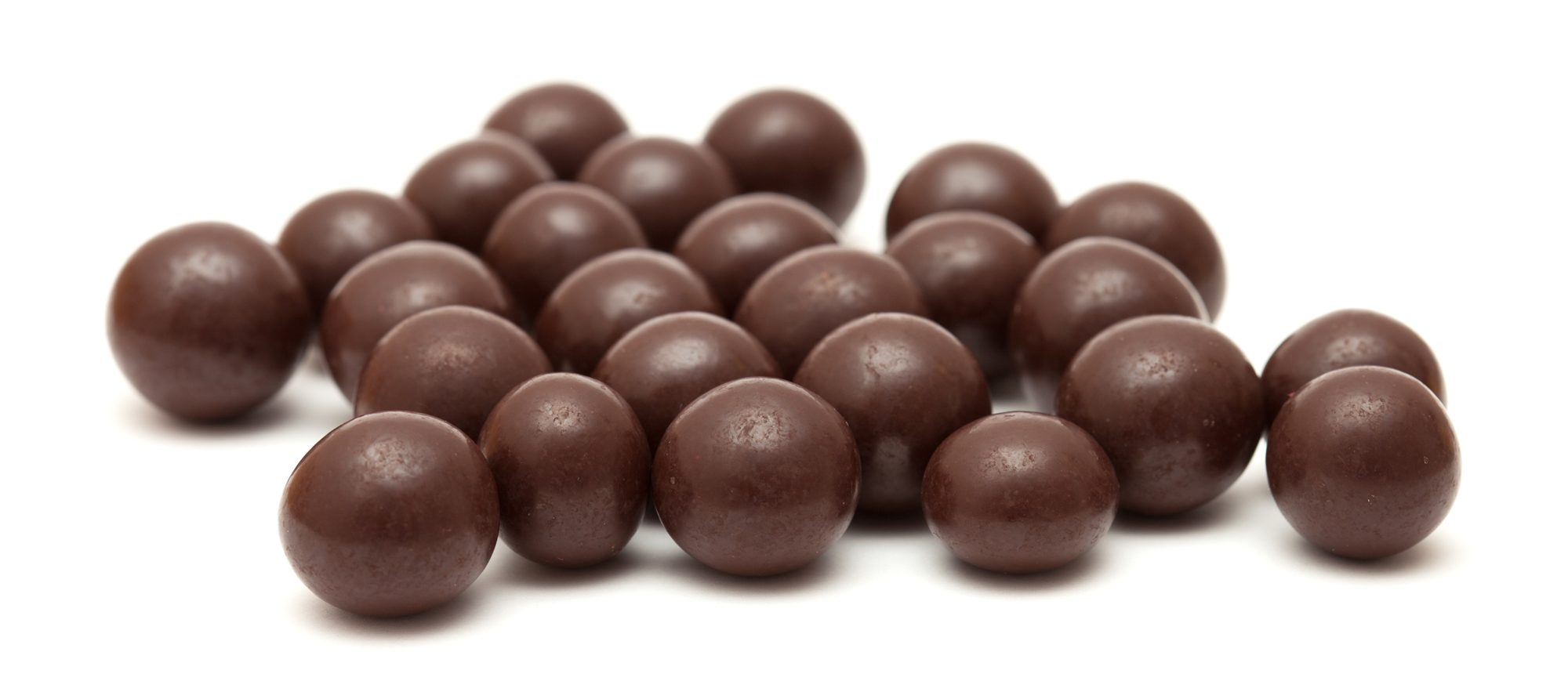

BASE
Core products
The core is a nut – typically peanuts. Medium to large sizes are preferred, as a coating does not affect the overall shape of the nut. The nuts are primarily fried in vegetable oil. Nuts such as cashews, almonds, and macadamia nuts are used in premium mixes.
RECIPE
Ingredients
Ingredients for glazing differ in types and purposes:
- Water-based, sugar, and hydrocolloid concentrated solutions aim to ‘seal’ the surface to prevent fat migration, harden the surface, and offer a smooth surface to the final glazing application.
- An alcohol-based solution of resins, essentially shellac wax: the purpose is to ‘finish’ the surface to prevent water migration from the outside to the chocolate layer, thus avoiding sticking, reducing friction, and enhancing the gloss.
A combination of both above solutions may exist in one form for some product or convenience; an alternative to alcohol exists as well. But these options still need to achieve the same level of shine.
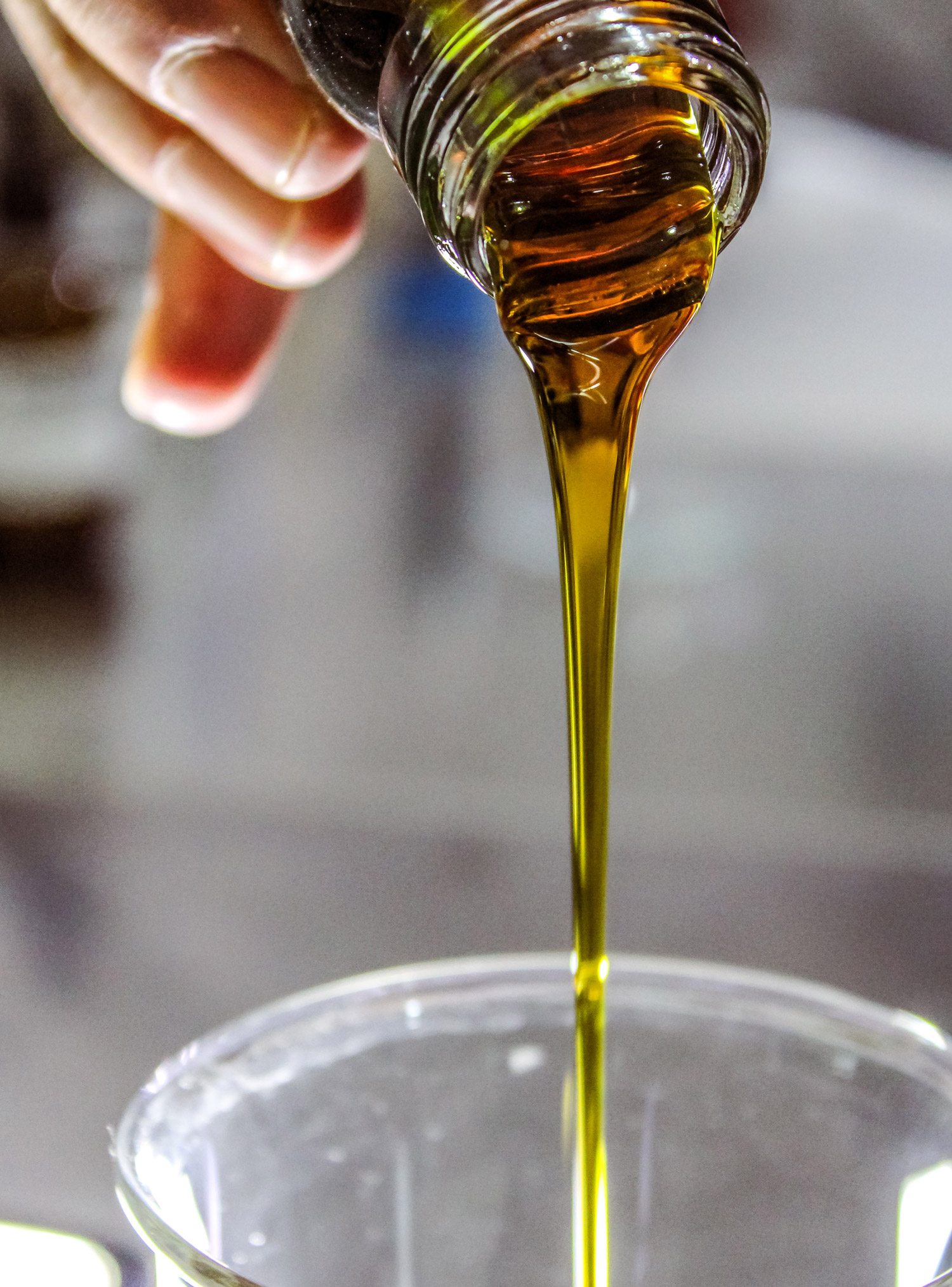





RECIPE
Ingredients
Ingredients for glazing differ in types and purposes:
- Water-based, sugar, and hydrocolloid concentrated solutions aim to ‘seal’ the surface to prevent fat migration, harden the surface, and offer a smooth surface to the final glazing application.
- An alcohol-based solution of resins, essentially shellac wax: the purpose is to ‘finish’ the surface to prevent water migration from the outside to the chocolate layer, thus avoiding sticking, reducing friction, and enhancing the gloss.
A combination of both above solutions may exist in one form for some product or convenience; an alternative to alcohol exists as well. But these options still need to achieve the same level of shine.
PROCESS
How does it work?
The operation consists of pouring a minute amount of the glaze, dispersing it, and removing the solvent. It occurs in a rotary pan. The pan has to be spotless before glazing. Traces of fresh chocolate tend to prevent proper glazing, just as any speck of dust, sugar, etc. The pan needs to be dedicated to this operation. Conversely, traces of glazed chocolate does not hinder glazing.
Step 1.
Pouring of the chocolate items.
Step 2.
Dribbling of the ingredient.
Step 3.
Dispersion by rotation and friction.
Step 4.
Setting by drying.
PROCESS
Coating system
The pan is identical to the chocolate-coating pan. It has baffles to enhance the rotation and tumbling.
PROCESS
Coating system
Rotating coating pan.
PRODUCT EVALUATION
How do you measure your success?
Key quality features
Chocolate glazing is a relatively simple operation with great benefits:
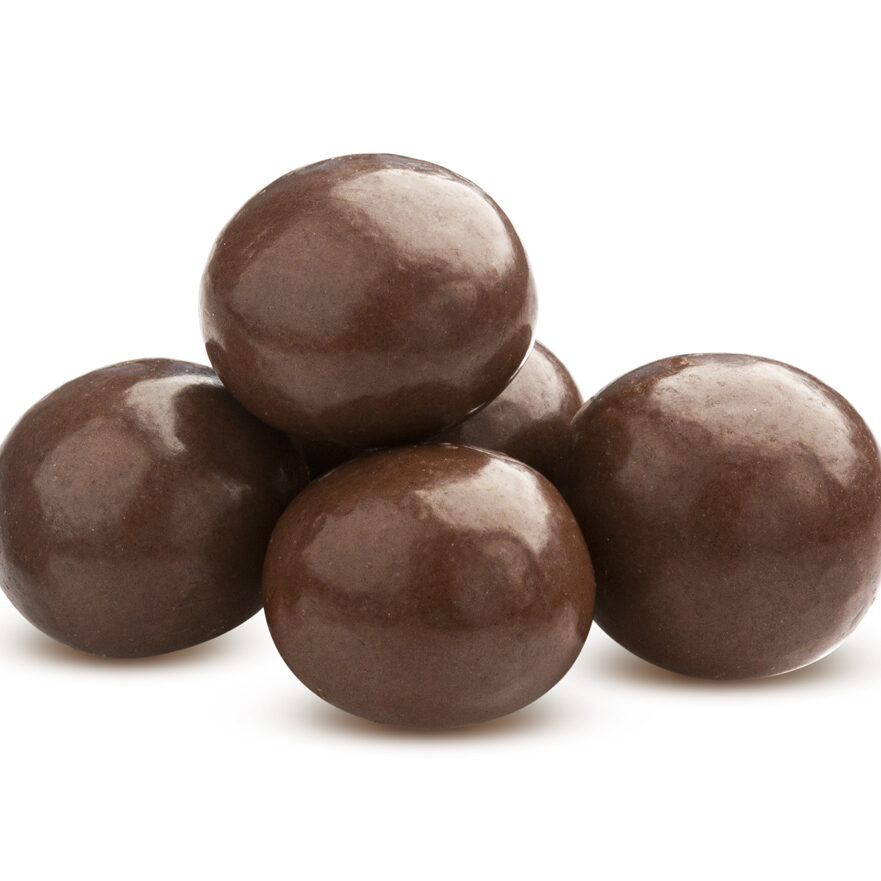

Surface aspect
The surface must be even and void of worn parts.
Product integrity
No traces of chocolate should smear the items by shearing or melting.
Stability
The glazed aspect remains intact until consumption.
Key quality parameters
There are specific factors to control.
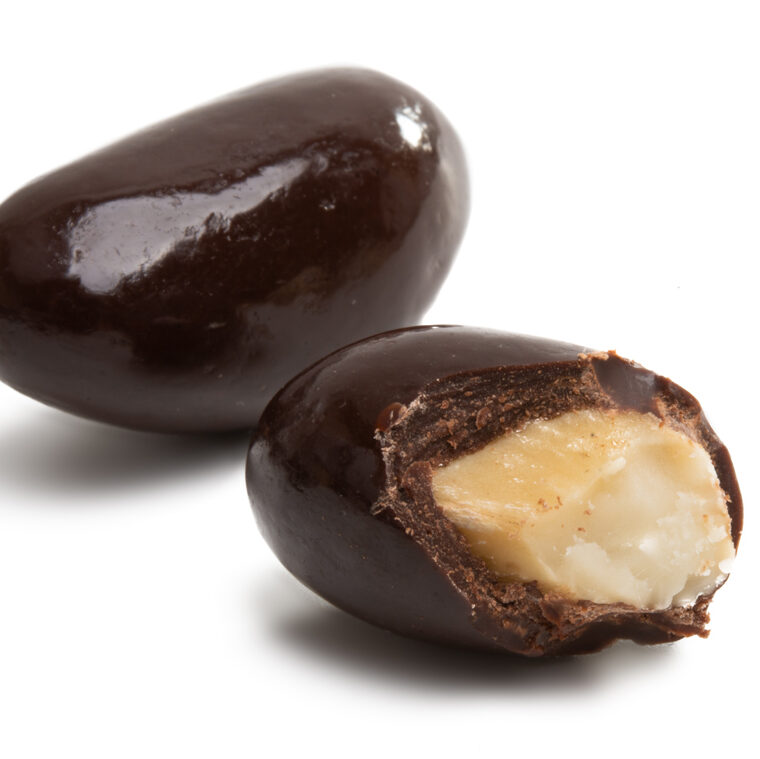

Ingredient
The ingredient is chosen depending on the chocolate item and production constraints. The dosage is precise to avoid discrepancies in processing or on the product.
Design
The pan shape and baffle design handle the product without damage.
Operation
Air moisture and temperature affect the result.
APPLICATION
Discover more applications

